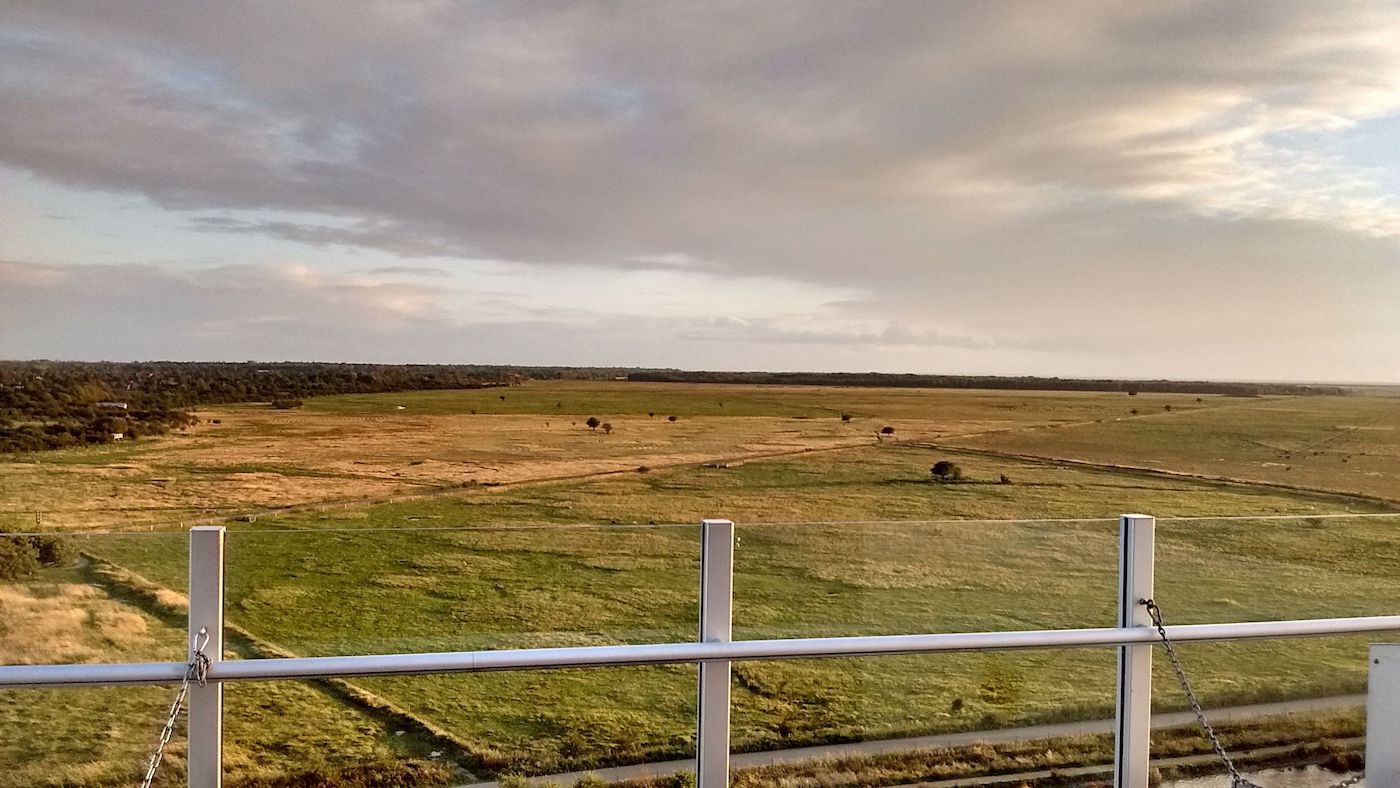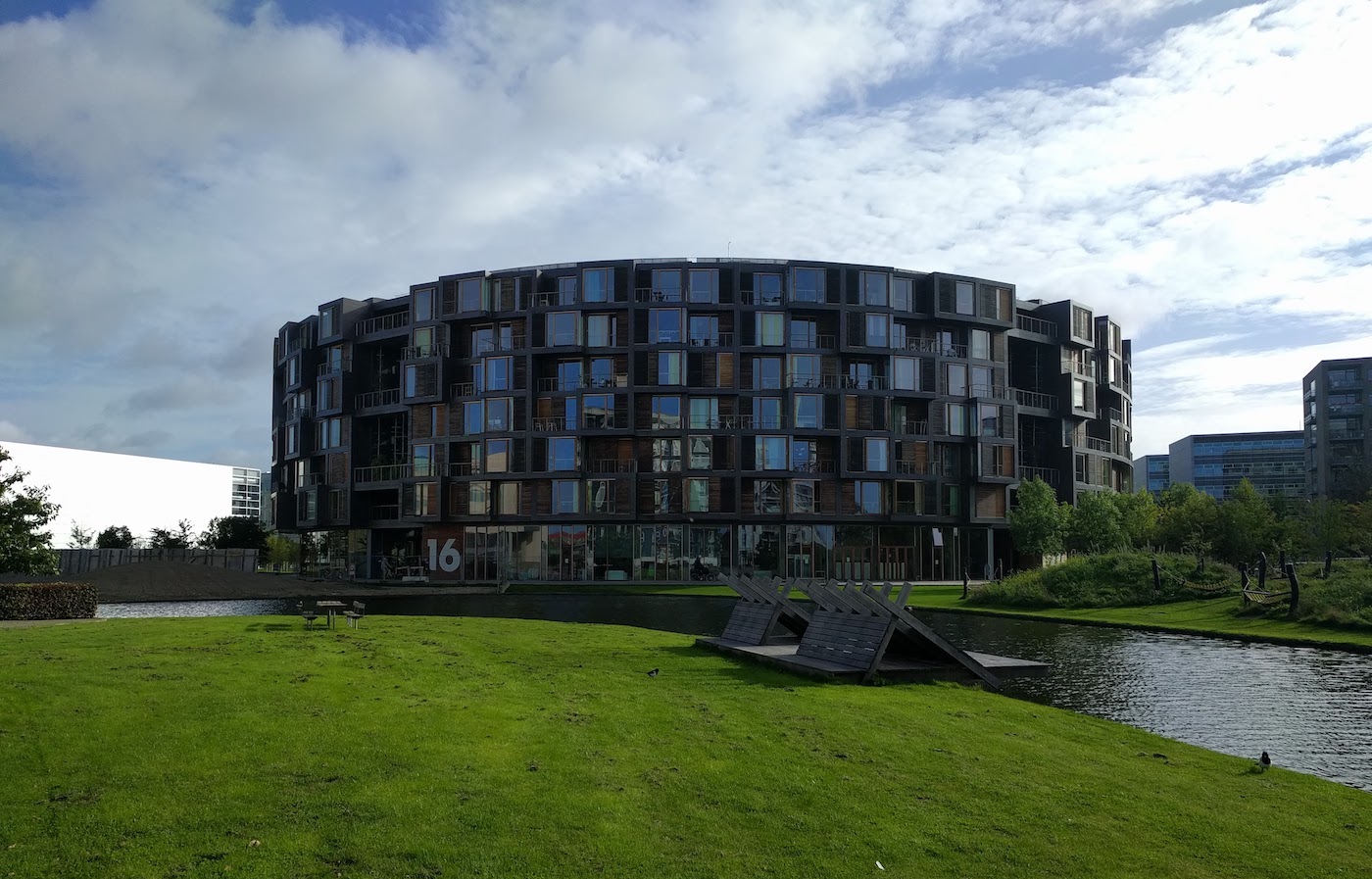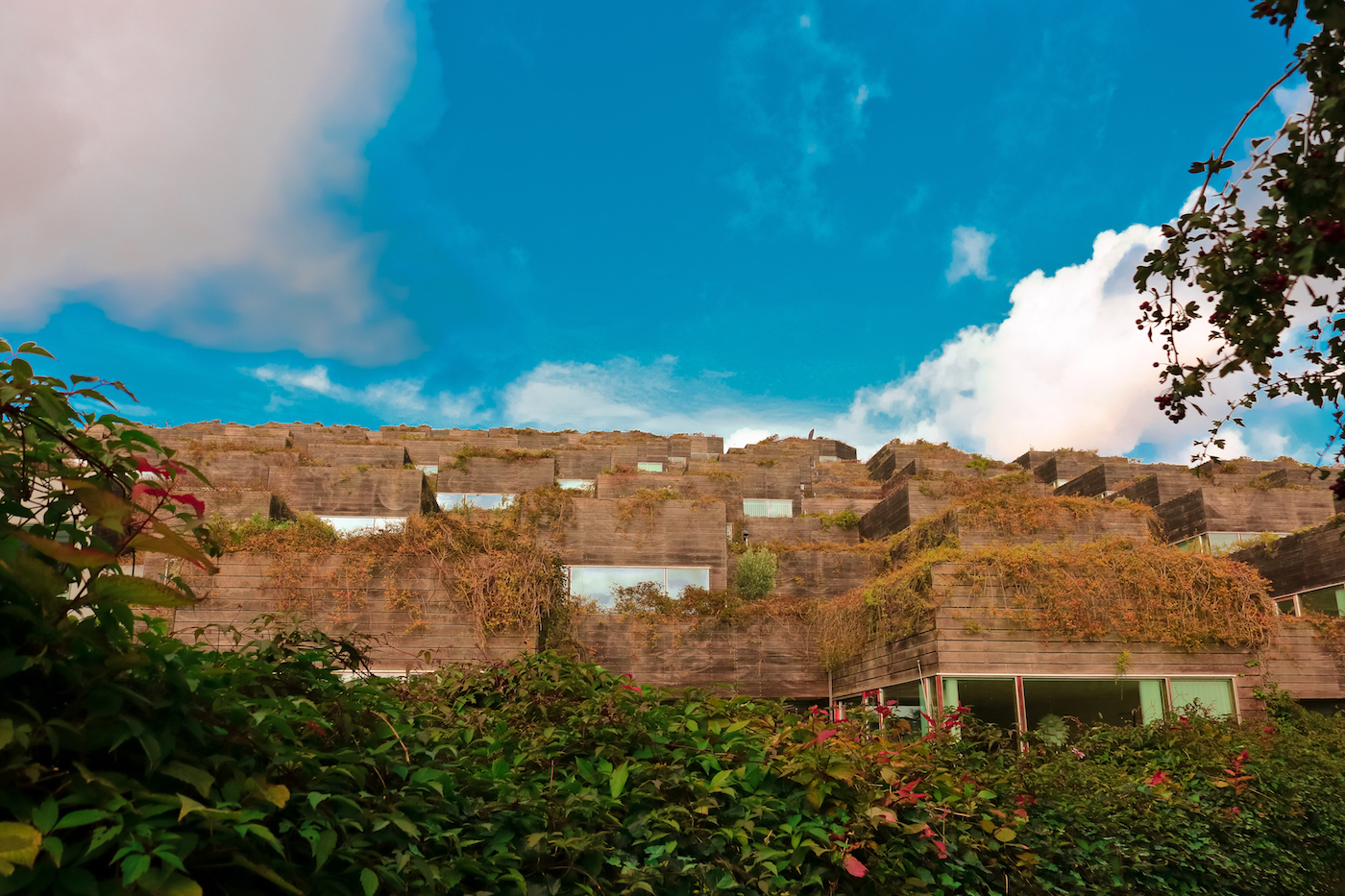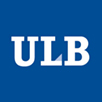
View south from atop 8TALLET (photo: Daniel Rosenblum)
Standing atop 8TALLET at the southern edge of Copenhagen is a deceptive experience. A look to the north offers a view of one of Copenhagen’s newest urban developments, Ørestad. Turning south, one is confronted by an expansive landscape of marshes and farmland. Here, it appears, one is standing at the very point where the city stops and nature begins.
With such a stark visual demarcation, it’s easy to see how a conceptual dichotomy of city and nature might be constructed. The city is made of concrete, glass and steel. It is a machine. Nature is raw and organic.
David Harvey once wrote that “there is nothing unnatural about New York City,” suggesting that the urban and natural worlds are not so distinct after all. Further explorations into the inter-connectedness of these worlds have concluded that urbanization is not the creation of new natures, but a transformation process of one nature into another.
Along these lines, natural resources are metabolized based on socially mediated processes, to produce urban environments. According to Erik Swyngedouw, the city is a “cyborg” or “hybrid” between machine and organism.
None of this should come as a surprise, especially given the amount of “nature” that we encounter within the city on a daily basis. Increased awareness of the ecological impacts of urbanization has meant the application of new ecologically friendly, or “green”, concepts to urban space, backed by discourses around sustainability. The city has become filled with hybrid spaces that weave together natural and manmade elements in innovative ways.
These eco-innovations take many forms, and are often focal points in new urban developments. And while their aesthetic or purported benefits may seem attractive, it’s important to question the motivations behind them.

Student dorms with canal in Ørestad (photo: Stephen Kent)
Applying a critical lens to current urban developments like Copenhagen’s Ørestad helps illuminate a greenwash effect taking place in cities; specifically, how natural resources are commodified and deployed for attracting investment. Ecological considerations are only supported insofar as they advance economic goals. Resulting urban natures consist of various “sustainable” elements, such as energy efficient buildings, resource conservation measures and green roofs, while public life and accessibility take a backseat.
Ørestad is located on the island of Amager in south Copenhagen. The area was mostly wetlands until the 90s when the city government decided that developing the area could help pull the city out of financial crisis. The project was conceived as a new urban centre that would provide jobs and housing to Copenhagen’s residents, while serving as a key economic hub due to the area’s international connections via the nearby airport and railway link to Malmö, Sweden.
City-owned land was transferred to a municipally owned development corporation, which then sold parcels to developers. The revenues went back into city coffers, helping to finance major infrastructure investment, namely the extension of the metro to the area.
Environmental assets were central to the planning of Ørestad. According to the Danish Ministry of Environment, “As an economic bastion, developed with water, nature and sustainable urban aspects, Ørestad has already strengthened Copenhagen as an international city and centre of the Øresund region.”
The most prominent natural feature in Ørestad’s design is the use of water. Since the development is built on former wetlands, waterholes, ponds and canals are used for aesthetic appeal and to support place identity by linking Ørestad’s four districts. Innovations in stormwater management have been integrated into the build environment to divert runoff from roofs and roads into the canals, while new water treatment technology ensures the runoff is suitable to flora, fauna and human use.
An image of an enticing urban landscape where people go about their lives in a vibrant community surrounded by the soothing presence of water may come to mind. Reality looks a lot different however. A tepid response to the parcels for sale forced the hand of the municipal development company to sell land mostly for commercial purposes, including office towers and one of Scandanavia’s largest shopping centres.
Today, outside of business hours, much of Ørestad is lifeless due to a limited number of residents and a lack of quality public space or amenities for people to use. The housing projects that have been built by private developers are as much spectacles as they are homes, making affordability a problem. Star architect Bjarke Ingels has his name attached to the aforementioned 8TALLET, the VM Houses and the Mountain dwellings, all of which are highlighted in Ørestad’s investor marketing.
The Mountain by Bjarke Ingels could be described as a cyborg in its own right. The natural world is overtly represented through the project’s design and name. Units are stacked in a staggered fashion to create a sloping design, while much of the building’s façade is covered in a mural of the Himalayas.

The Mountain, designed by architect Bjarke Ingels (photo: Pranaya Rana)
Dwellings are all positioned on the east slope, each with its own garden, offering a greening effect that can be contrasted against the cold metal that surrounds the rest of the building. Meanwhile, the slope serves as a rain collection mechanism, allowing residents to use the water for their own gardens, with excess flowing into the nearby canal.
This only describes part of the building’s story. Since housing units are restricted to only one side, the building’s insides are used as a multi-story parking garage, complete with a cable-car style elevator to allow drivers to get from one level to the next.
The Mountain is a useful metaphor for considering “green” or “sustainable” building and urban design concepts in general. Looking at it from one angle may provide a view of how the physical and manmade worlds are brought into harmony in a cohesive fashion. But this is just one way of viewing these projects. They should be examined from various angles in order to realize what lies at their core.
In the case of both the Mountain and Ørestad as a whole, it is clear that these spaces or natures were conceived first and foremost as investment opportunities. Ørestad was meant to provide financial relief to the municipality, placing the motive of profit before social considerations.
A key tool for attracting investment, which is becoming an ordinary occurrence in urban planning, was ecological features. Instead of devising schemes for how the area might attract a diverse group of people through quality public space and affordable housing options, how to incorporate water, greenery and even superficial representations of mountains took precedent.
Given the lack of social life observed in Ørestad today, the area should be taken as an example of how eco-innovations can backfire. Closer attention needs to be paid to the types of urban natures these innovations help produce, and whose interests they serve.


